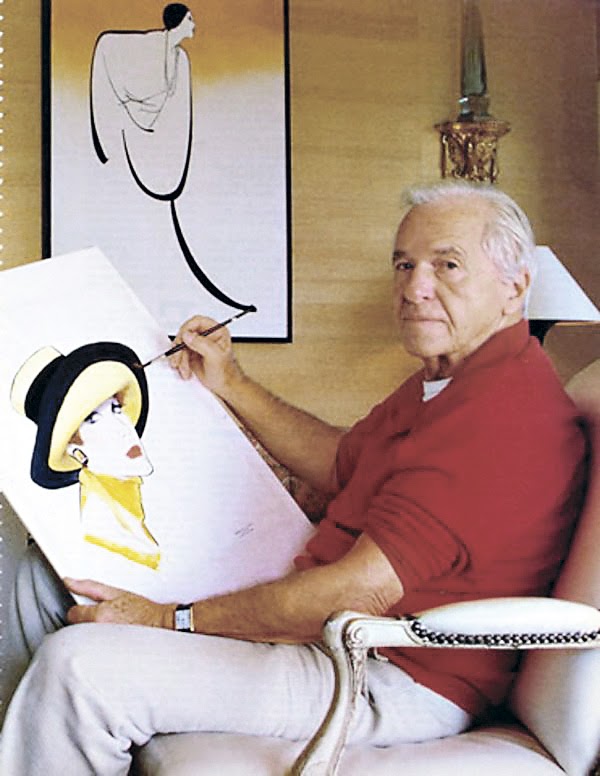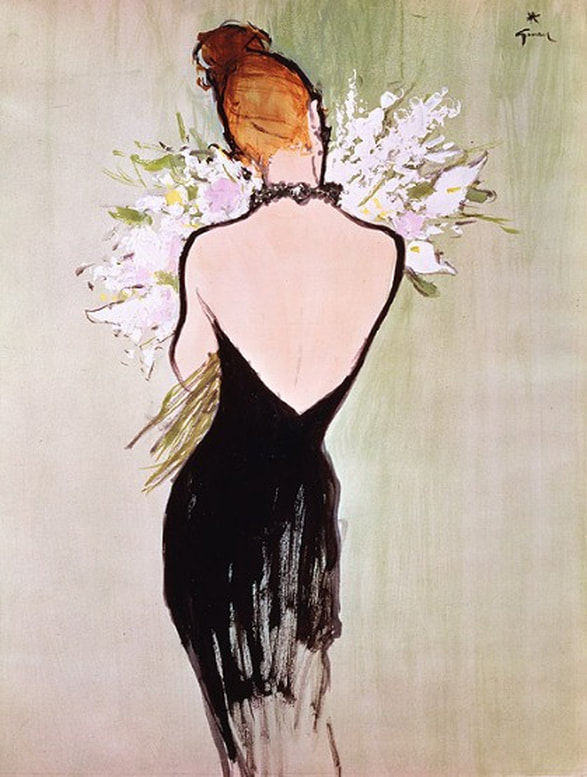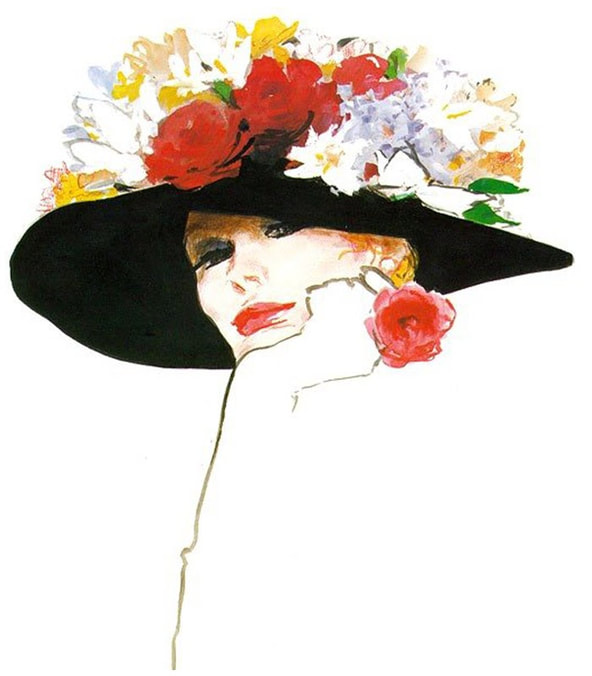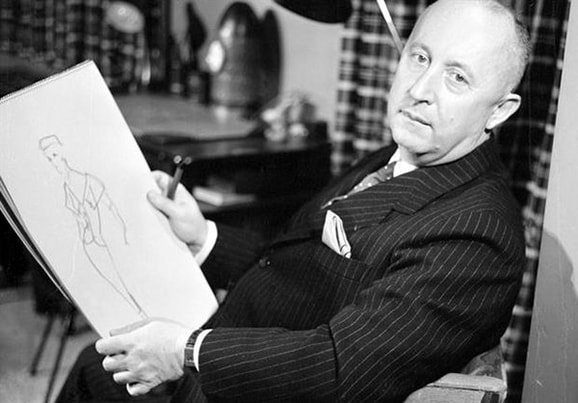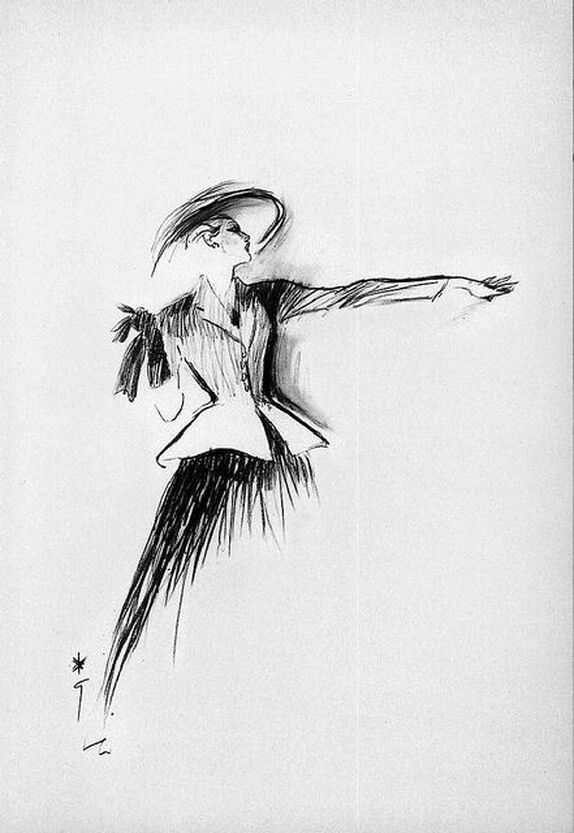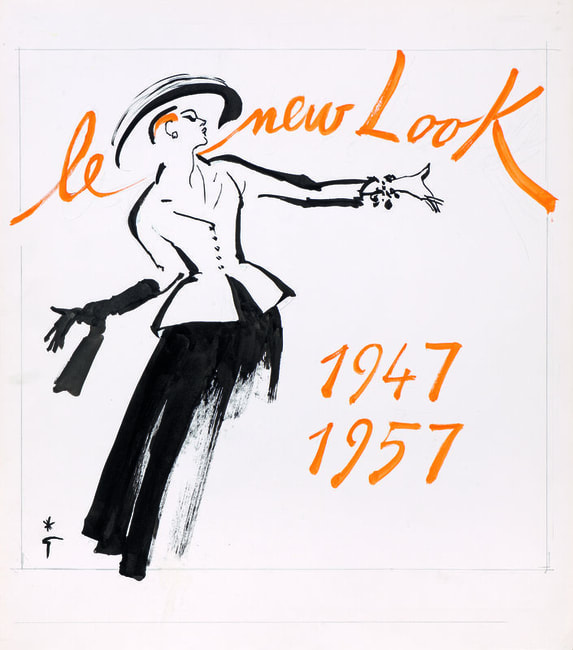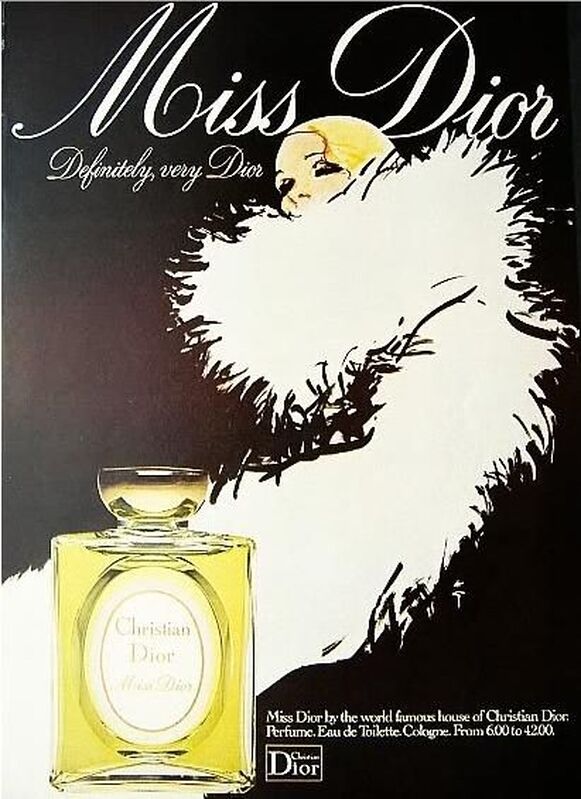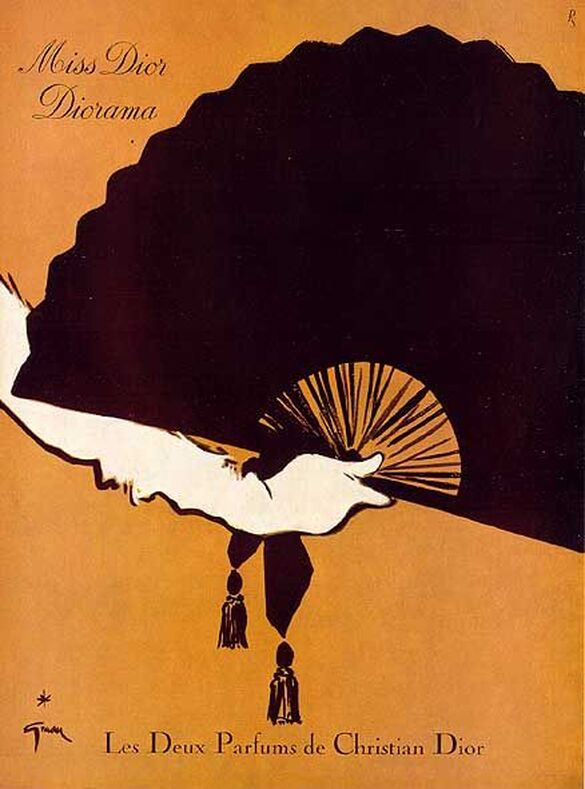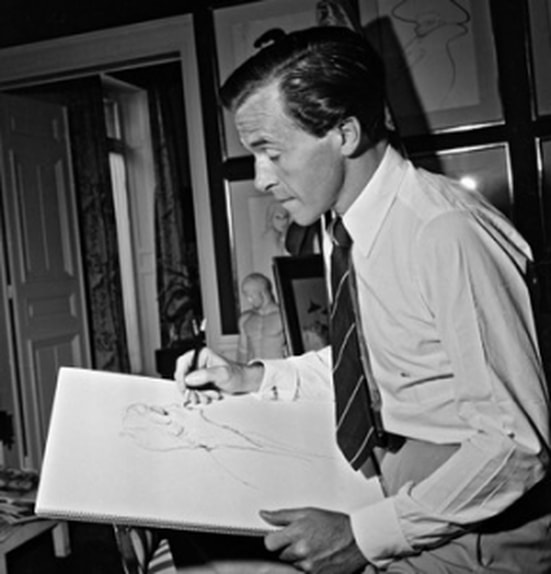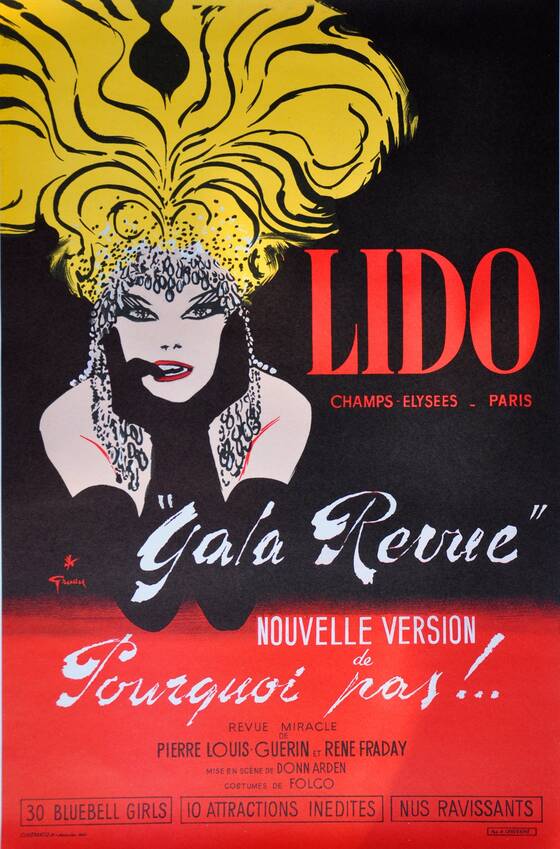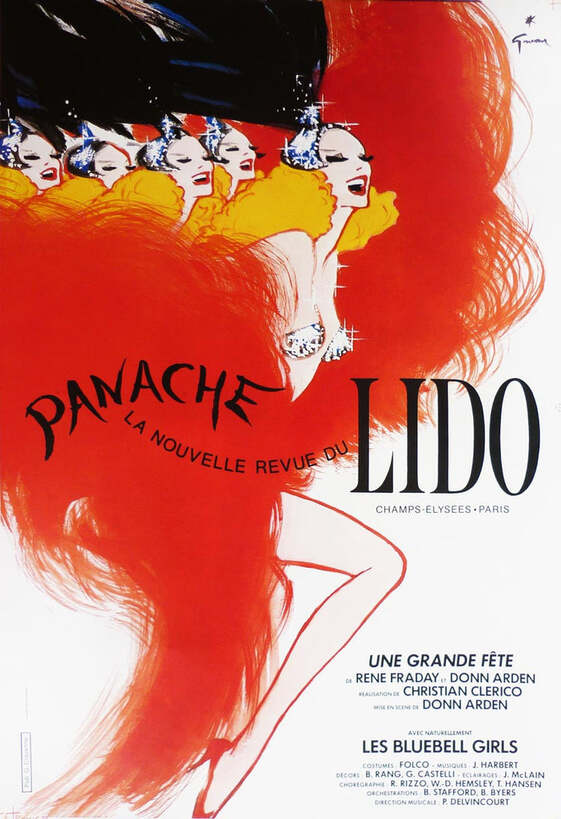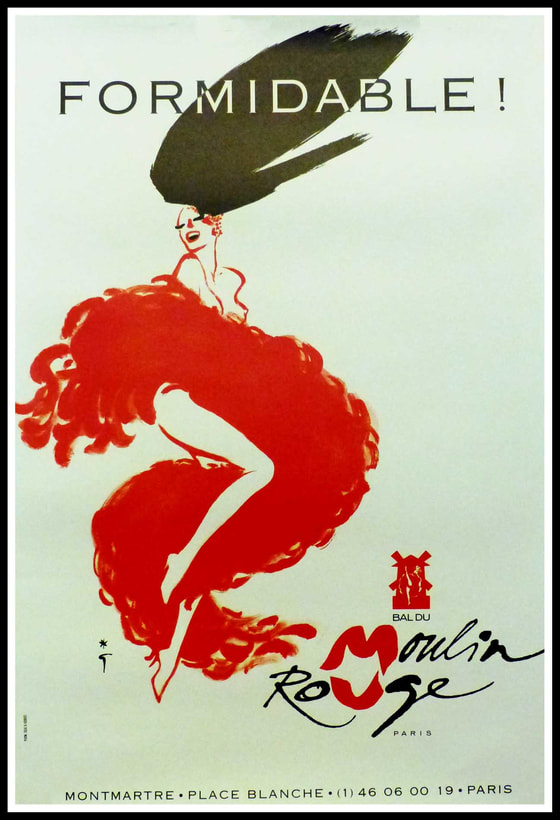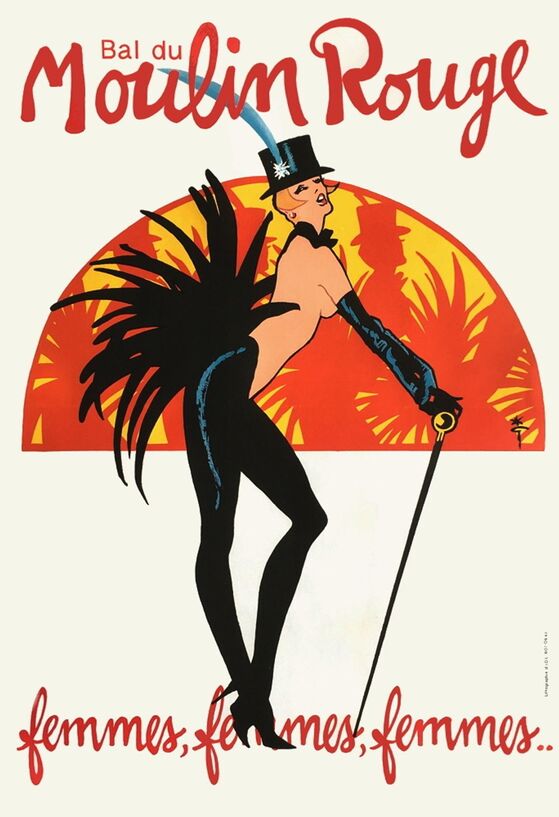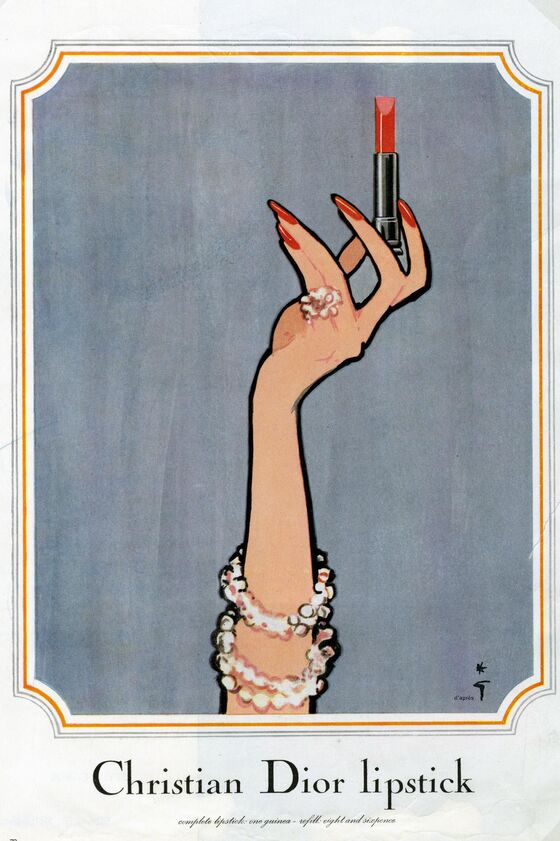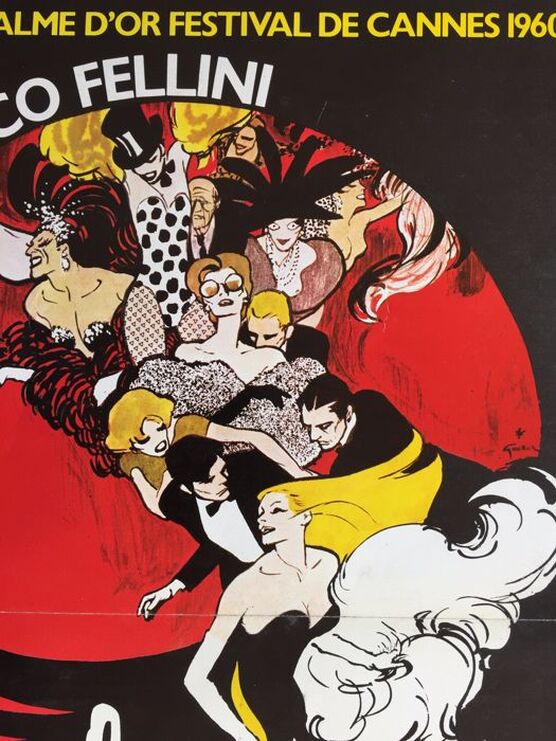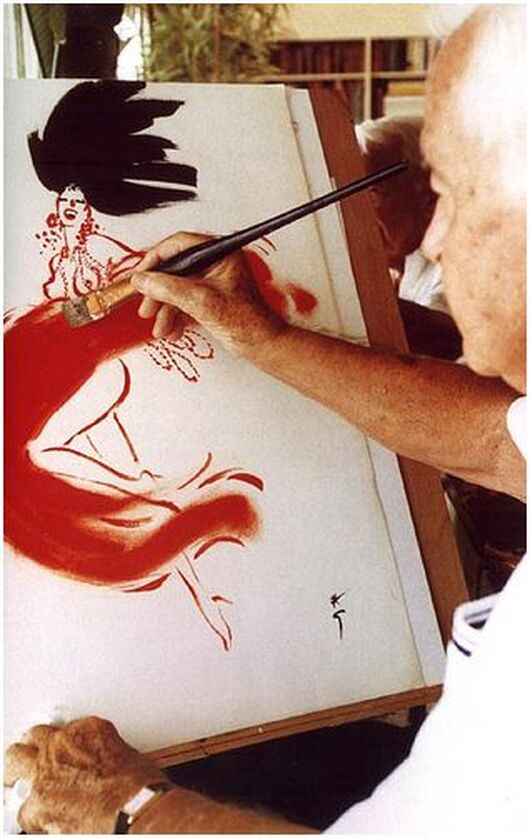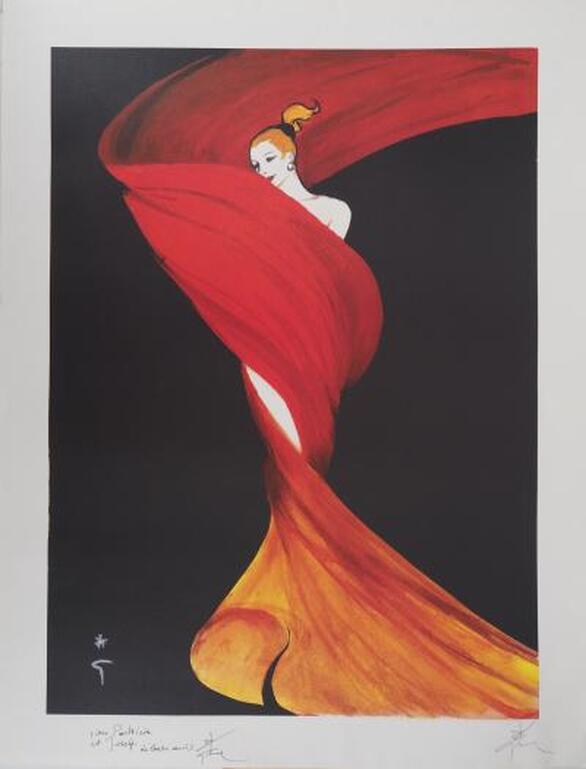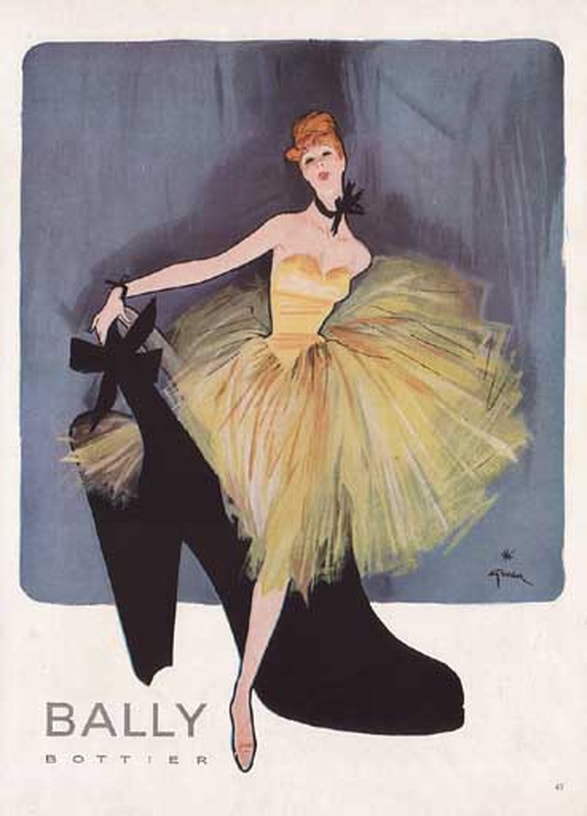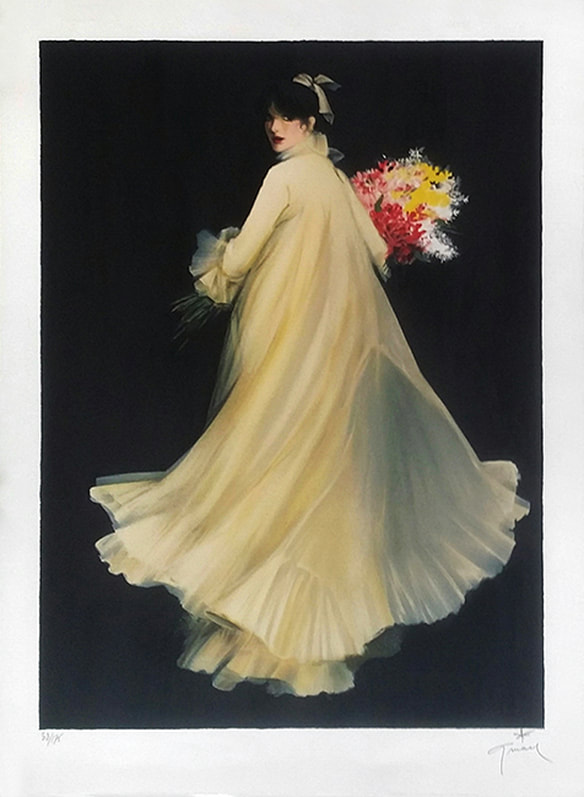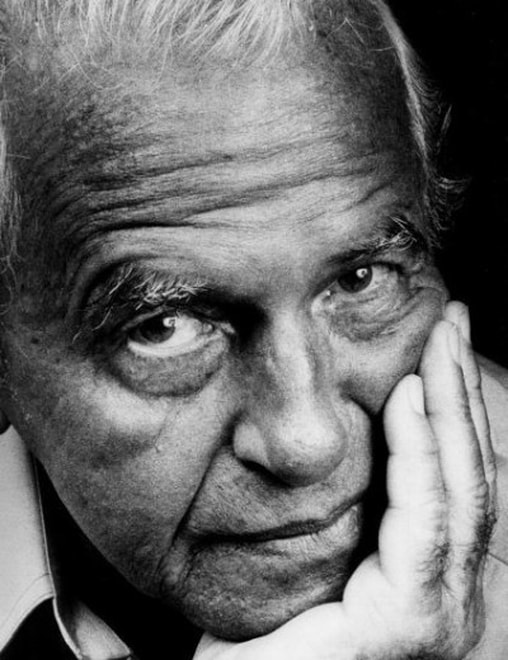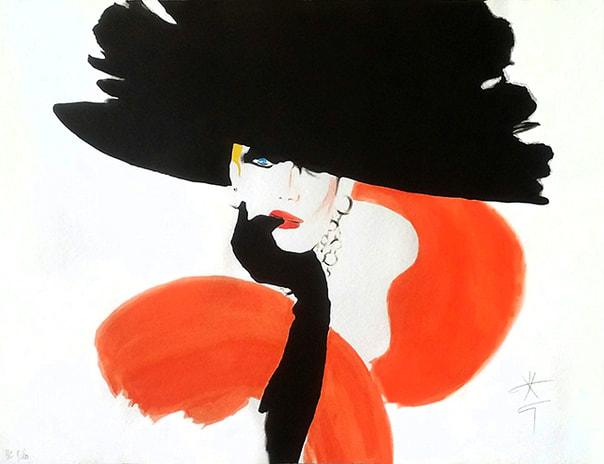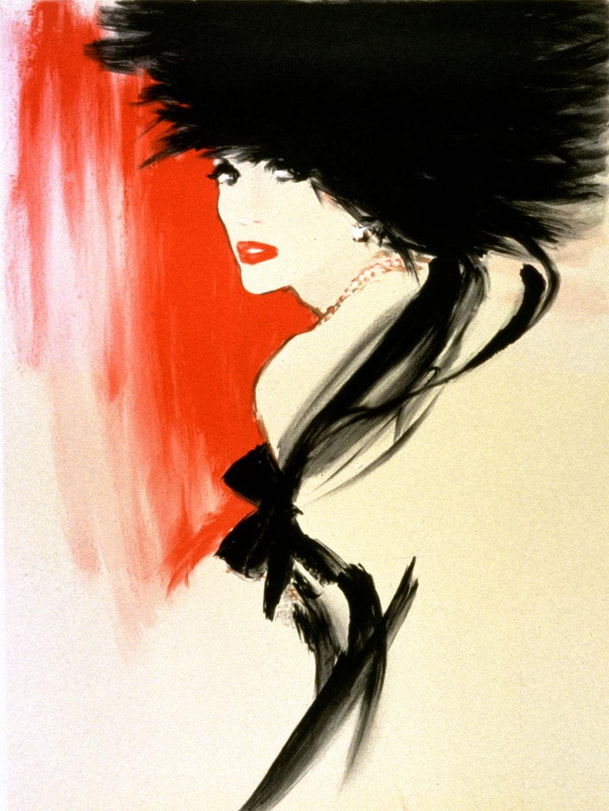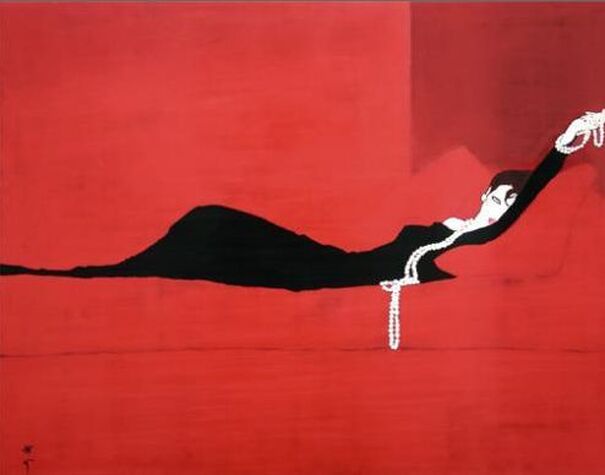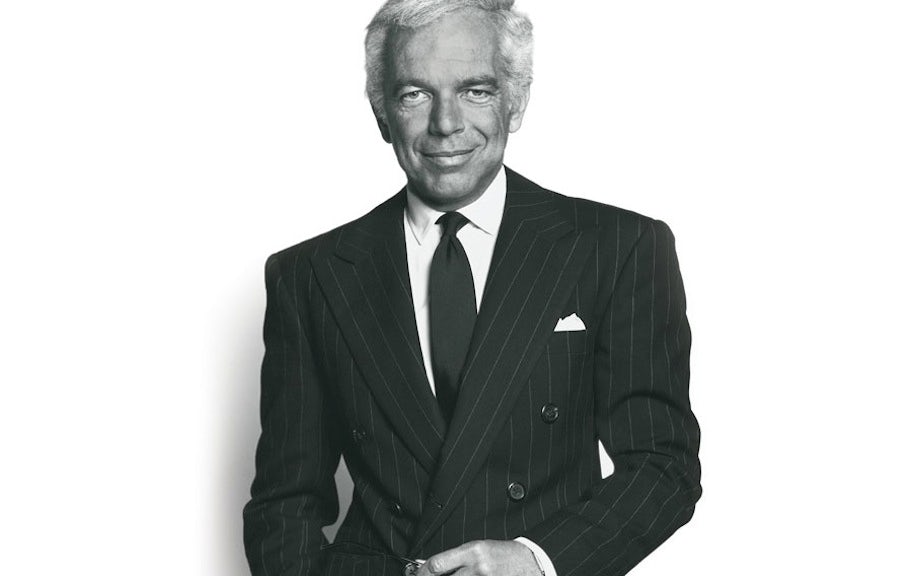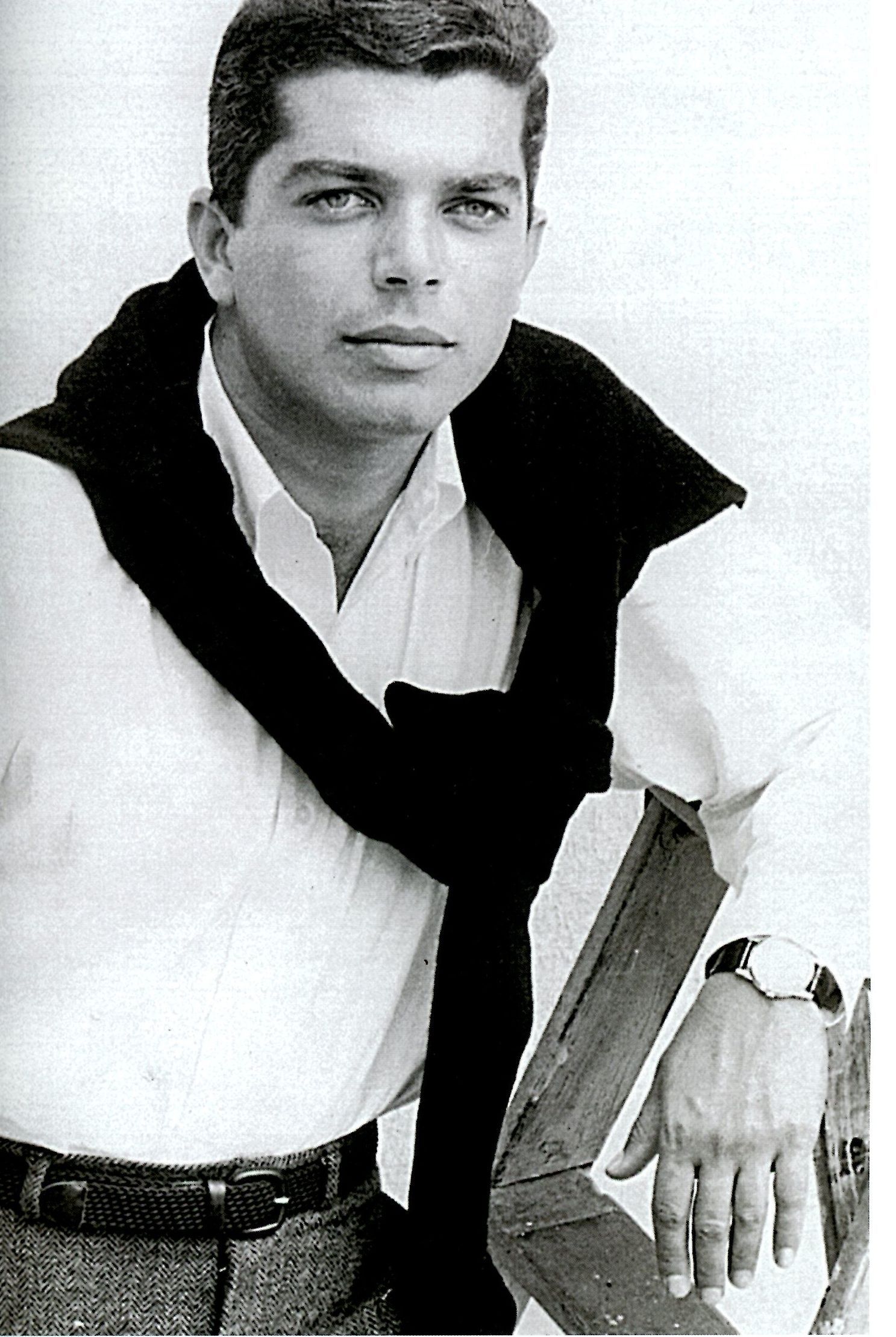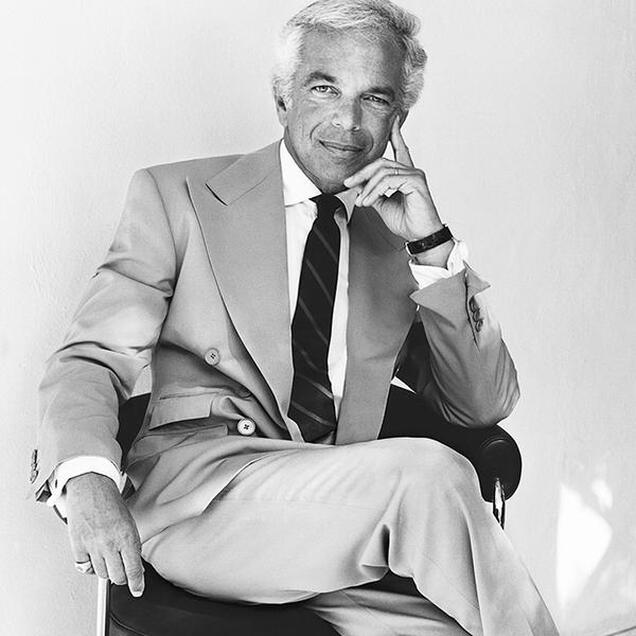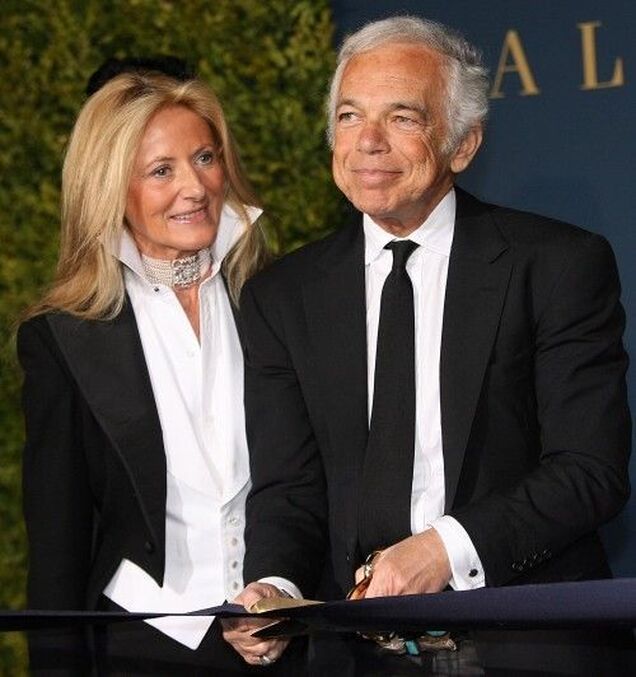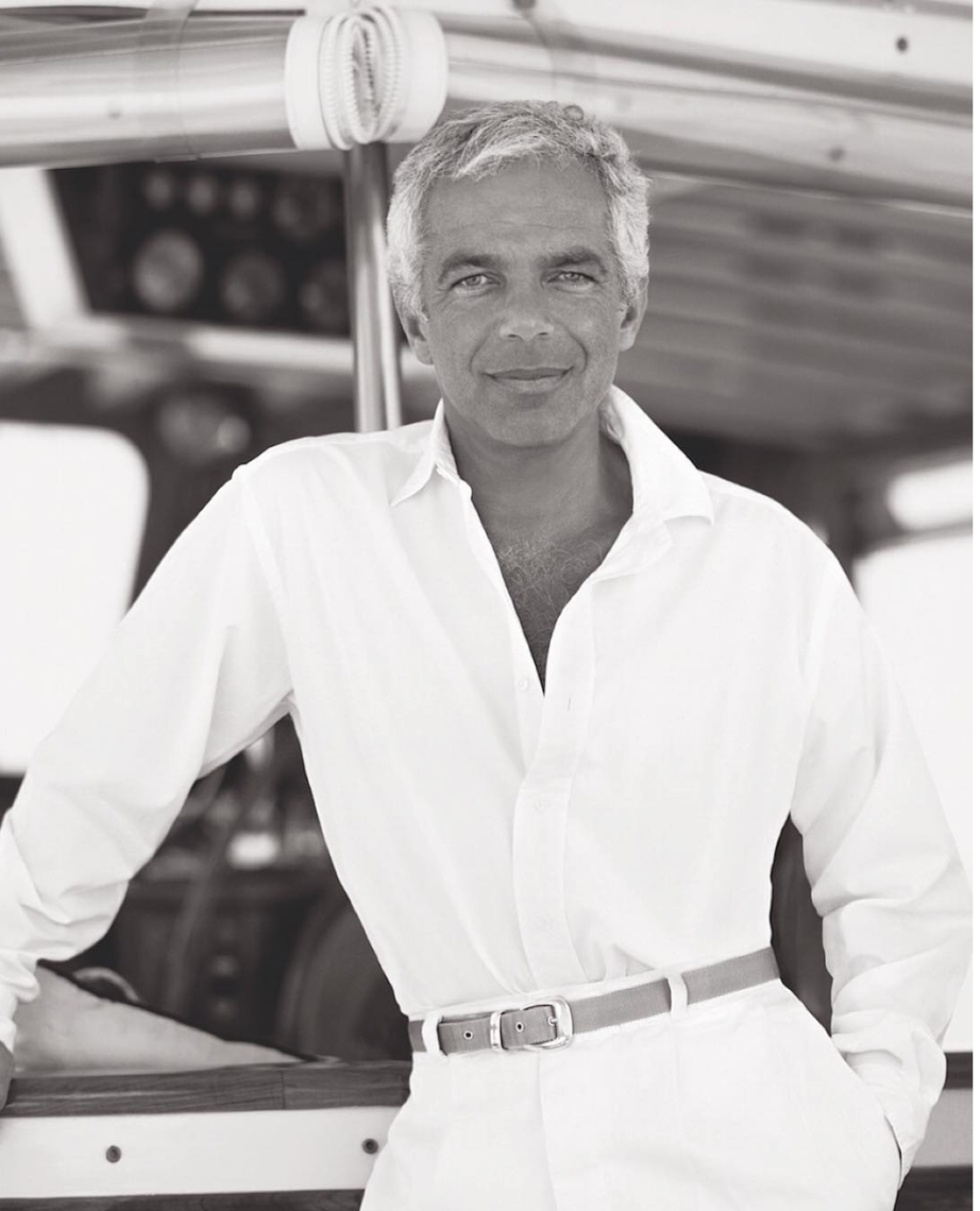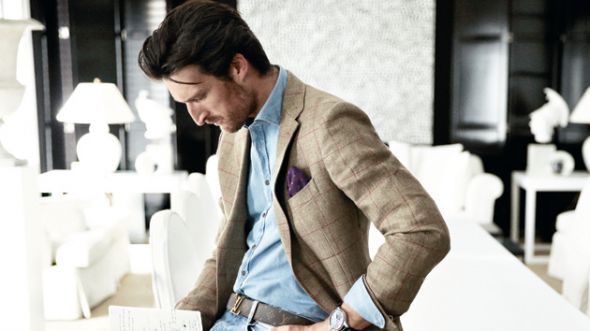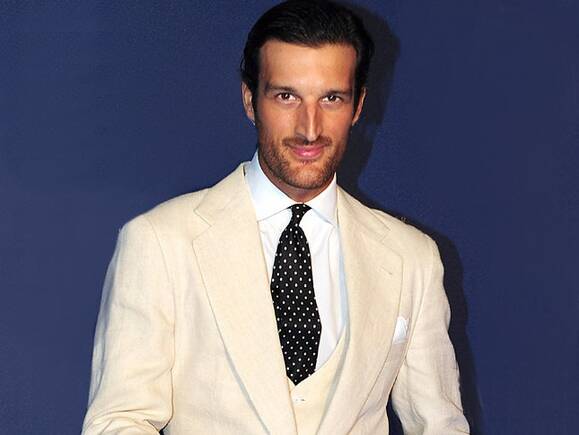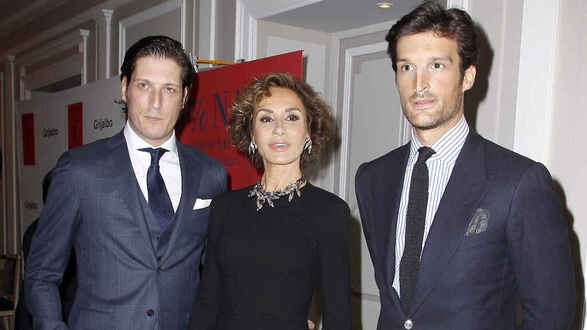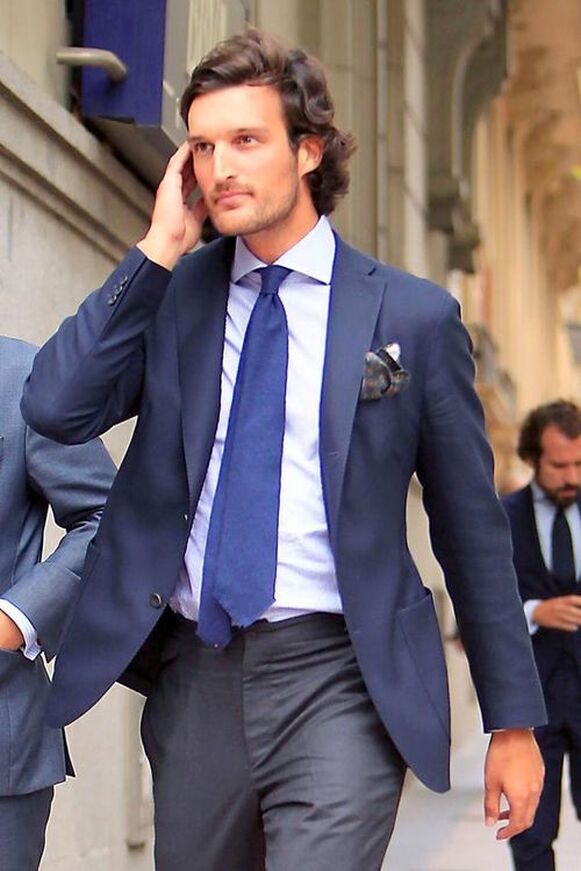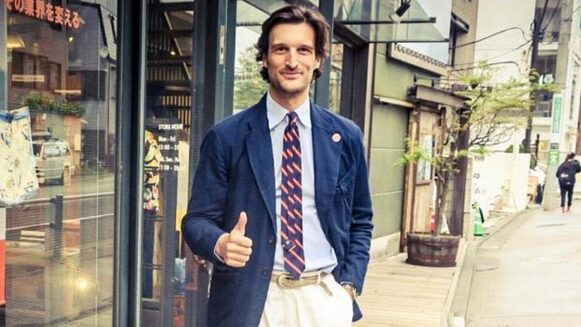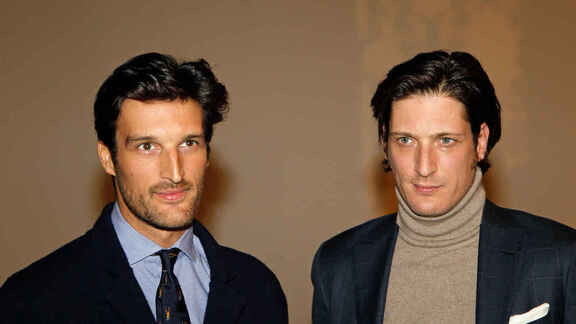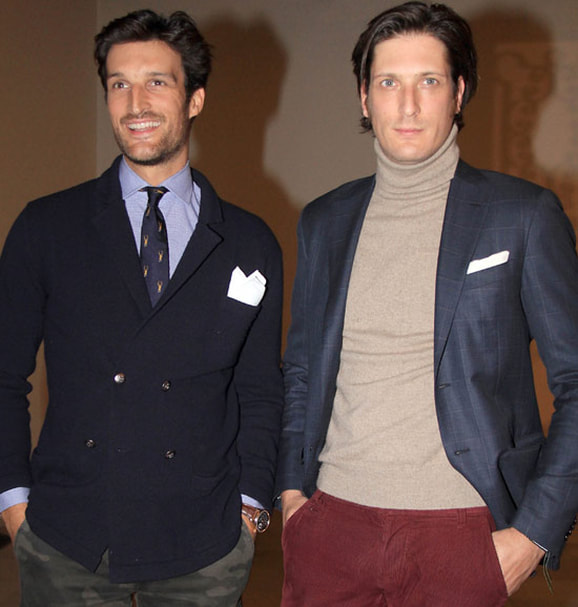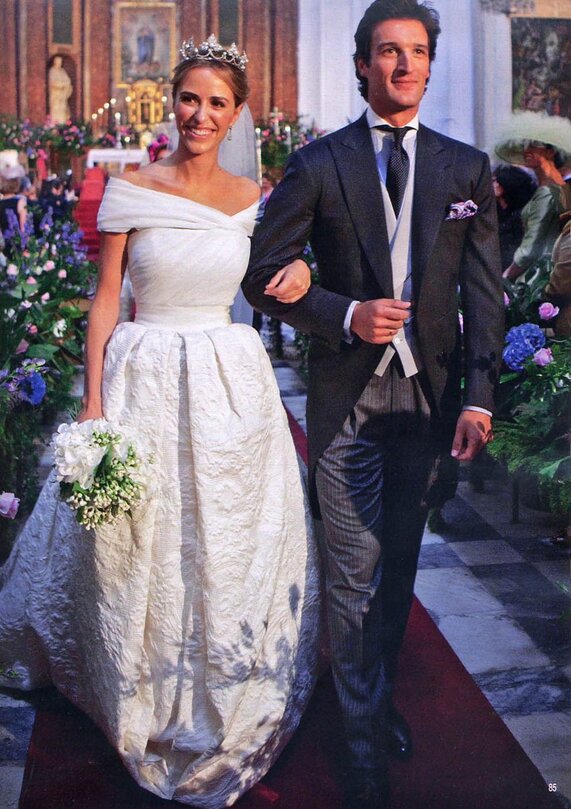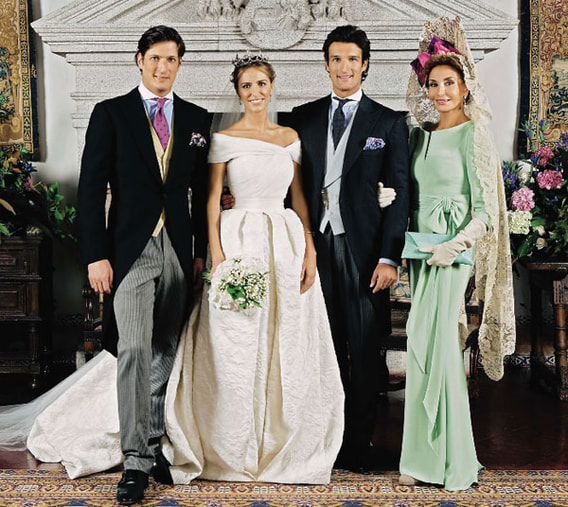|
Count Renato Zavagli Ricciardelli della Caminate, professionally known as René Gruau (4 February 1909 – 31 March 2004) was a fashion illustrator whose exaggerated portrayal of fashion design through painting has had a lasting effect on the fashion industry. Because of Gruau's inherent skills and creativity, he contributed to a change in the entire fashion industry through the new pictures that represented the already popular designs created by designers in the industry. The benefits, including economic stimulation and enhancement of advertising are still present in the industry today via a new way of fashion illustration, fashion photography. Gruau became one of the best known and favorite artists of the haute couture world during the 1940s and 50s working with Femina, Marie Claire, L'Officiel, L'Album Du Figaro and an assortment of "high-style" magazines. Gruau's artwork is recognized and commended internationally in some of Paris and Italy's most prestigious art museums including the Louvre in Paris and the Blank in Italy. In addition to his international fame and recognition, "Gruau's artwork is known for its timeless and enduring style". BiographyBorn Renato Zavagli Ricciardelli delle Caminate in Rimini, Italy, on 4 February 1909, Gruau was the son of Alessandro Zavagli Ricciardelli delle Caminate, an Italian count, and Marie de Gruau de la Chesnaie, a French aristocrat. When he was 7 years old, René's parents were separated, then divorced. His Mother Marie de Gruau lost most of her fortune after her lawyer managed to steal from her during the divorce proceedings. Gruau demonstrated talent for drawing throughout much of his early life which was encouraged by his mother, his father, however, wanted him to become royal military commander. After his parent's divorce, Gruau lived with his mother. In 1923, Gruau moved to Milan with his mother, and very soon he began to support his mother and himself by selling drawings to the Milanese fashion journal Lidel, at age 14. There he quickly showed his talents and the success Lidel opened doors for him to other magazines like Eva, Dea, Donna, Sovrana, Bellezza, etc. It was during this period, between 1924-1926, he took his mother's last name Gruau, instead of his father's last name and noble connection, and changed his first name as well, signing his works as René Gruau. In the early 30s, René Gruau moved to Paris, where he started to collaborate with magazines like Marianne, Le Figaro, as well as International periodicals like Chapeaux Mode, Die Dame, Die elegante Welt, although he kept working with some of the Italian magazines he had been collaborating while living and working in Milian. But his real success came in 1937, when he started to work with the magazine Fémina, the then main arrival of Vogue France. Since then, he was able to find work with other Parisian magazines like Marie Claire, L'Officiel de la Couture et de la Mode de Paris, Très Chic, and even Vogue itself, but also International magazines of United States of America and UK. More importantly perhaps, Gruau started collaborating with the most prestigious houses of haute couture in Paris, including Pierre Balmain, Jean Patou, Lanvin, Lucien Lelong, Charles Worth, Robert Piguet, Rochas, Elsa Schiaparelli and Cristóbal Balenciaga. During World War II, Gruau moved to Lyon then Cannes to find work. It was in Cannes he started his long and successful collaboration with the magazine International Textiles for which he would designed the covers until 1984. In 1947, Gruau became artistic director for advertising in Maison Christian Dior. The already successful Italian illustrator and the then unknown French couturier had known each other when both were young illustrators at Figaro in 1930 and formed a friendship which would last until Christian Dior's untimely death in 1957. Gruau contributed greatly to Christian Dior's most iconic "New Look" of the time, with his interpretation and upgrading of old-style graphic illustration. Gruau also was the creator for all of Christian Dior's perfume advertising, from its first perfume Miss Dior, then Diorama, then Diorissimo, then Eau Sauvage, and Jules in 1980. Since the 50s, fashion photography was increasingly replacing the place of fashion illustration, but Christian Dior remained loyal to his friend Gruau who would in turn remain loyal to Maison Christian Dior even long after the couturier's early death. Gruau moved to the United States in 1948 to work for Harper's Bazaar (and occasionally). He remained with the magazine for two years, and then went to work as sole illustrator for Flair. Besides working with the fashion magazines, Gruau expanded his career to poster and advertising design. In the 50s Gruau moved back to Paris, and dedicated to poster designs for the cabaret Lido since 1956, for which he would work until 1994. Since 1961, he started to work also with Moulin Rouge. Gruau's advertising campaigns for Moulin Rouge and Lido de Paris utilised an old-world aesthetic, celebrating the traditional poster-art graphics of Toulouse-Lautrec, Pierre Bonnard and the pre-1900 Parisian artists and classical Japanese drawings. In his long career involved with advertising, Gruau had worked on campaigns for names such as Christian Dior, Air France, Martini, and Omega watches. But in the world of advertising, he was perhaps best known for creating the marketing images for Christian Dior's Miss Dior perfume and its Rouge Baiser lipstick, and his name was mostly connected with Christian Dior. According to Alan Riding of the New York Times, "everything he did, he evoked the glamour and style of the world of high fashion". Curiously, although Gruau worked in various fields in his long productive career, from periodicals, magazines, fashion houses and cosmetics companies, to musicals , the only time he was involved in cinema was when he designed movie poster for Italian director Federico Fellini's La Dolce Vita in 1959, although Hollywood had tried to seduce him for years. Was that due, at least partially, to the fact that Federico Fellini's birthplace was also Rimini, the same as Gruau himself? In his lifetime, Gruau worked for numerous magazines including Marie-Claire, Femina, Elle, Vogue, Harper's Bazaar, Flair, L'Officiel, Madame Figaro, and L'Officiel de la Couture. And Gruau collaborated with various house of haute couturier like Pierre Balmain, Christian Dior, Jacques Fath, Cristobal Balenciaga, Hubert de Givenchy, Elsa Schiaparelli, Rochas, Lanvin and Elizabeth Arden, in total 167 brands. Gruau gave life to their haute couture clothing and expanded their popularity with his captivating illustrations. Gruau has been exhibited internationally at the Paris Musee du Costume in 1989 and The Musee de la Publicite in 1999. The 2011 Spring/Summer Haute Couture Collection of Christian Dior by John Galliano was heavily inspired by Gruau's works. Gruau's birthplace, Rimini, holds a permanent collection in its city museum. Today Gruau's works are in the permanent collections of many art institutions, including the Louvre in Paris. BiografiaRenato Zavagli Ricciardelli delle Caminate, figlio del conte Alessandro Zavagli Ricciardelli delle Caminate e della nobile parigina Marie de Gruau de la Chesnaie, visse a Rimini fino all'età di 7 anni, quando i suoi genitori si separarono. Il divorzio ufficiale dei genitori fu seguito con grande scalpore dalla stampa, soprattutto perché Marie de Gruau si affidò ad uno degli avvocati più conosciuti a quel tempo che anziché aiutarla si prese gioco di lei e riuscì a sottrarle la maggior parte dei suoi beni. Affidato alla madre, la sua vita fu scandita in base alle stagioni da trascorrere ognuna in un luogo diverso: estate a Rimini, autunno a Milano, inverno tra Montecarlo e Parigi. Renato nutriva un forte attaccamento per la madre, che lo assecondava nelle sue passioni artistiche, a differenza del padre che preferiva per lui una carriera diplomatica. Tra il 1920 e il 1921 il giovane Renato, spronato dalla madre, fu allievo del pittore riminese Gino Ravaioli, primo e unico suo insegnante di disegno pittorico, con il quale imparò le basi del disegno e coltivò il suo talento. A partire dal 1923, Renato si trasferì a Milano dove cominciò quasi subito a fare del suo talento artistico il suo lavoro, volendo aiutare economicamente la madre. Grazie alle conoscenze di Marie de Gruau, iniziò a lavorare come illustratore di moda per la rivista Lidel. Nei circa dieci anni trascorsi a Milano, l'artista divenne sempre più famoso, ampliando le sue conoscenze e collaborazioni con il mondo della moda. Renato si occupava di disegnare i figurini dei modelli delle varie case di moda, da pubblicare poi sulle riviste del settore. Oltre all'abbigliamento si occupava anche di arredamento e novelle. È tra il 1924 e il 1926 che Renato incominciò ad apporre la firma René Gruau alle sue opere, prendendo quindi il cognome della madre. Agli inizi degli anni trenta, René Gruau si trasferì a Parigi, continuando la sua attività di illustratore e instaurando rapporti lavorativi sempre più rilevanti. Lavorava per riviste come Marianne e Le Figaro, ma anche per numerosi periodici come Chapeaux Mode, Die Dame, Die elegante Welt. Il vero e proprio successo arrivò nel 1937 grazie alla collaborazione con la rivista Fémina, antagonista del Vogue francese. A partire da quel momento ebbero inizio tutte le sue collaborazioni con le più prestigiose case di moda parigine, tra le quali Patou, Lanvin, Lelong, Worth, Piguet, Rochas, Schiaparelli e Cristóbal Balenciaga; ma anche con altre riviste, come Marie Claire, Vogue, L'Officiel de la Couture et de la Mode de Paris, Très Chic. Nel periodo successivo alla seconda guerra mondiale, René Gruau conquistò anche il successo internazionale grazie al lavoro presso l'atelier di Christian Dior, un grande amico con il quale condivideva la stessa visione stilistica sulla femminilità, riuscendo così a rappresentare egregiamente lo stile New Look. René amava molto la vita mondana parigina, come lui stesso raccontava: “Erano veramente anni d'oro per la moda. Parigi era una città brillante e straordinaria, c'erano sempre feste e balli. Era un periodo molto chic, io ero diventato improvvisamente molto famoso, mi cercavano da ogni parte, finalmente guadagnavo bene con il mio lavoro. Andavo molto volentieri alle feste”. Dopo varie collaborazioni con prestigiosi periodici di moda, decide di dedicarsi anche alla cartellonistica: la pubblicità, che egli considera un “problema di ordine visivo”, lo stimola e lo appassiona. Gruau si avvale a tal proposito di una vera e propria strategia comunicativa che sfrutta tecniche quali primissimo piano del soggetto, inquadratura a troncare l'immagine e linee diagonali, in modo da catturare l'attenzione dell'osservatore, guidarne lo sguardo e animare la rappresentazione. Articola inoltre scenari tridimensionali attraverso espedienti quali crachis a spruzzo, puntinatura e fondi sfumati. Oltre a lavorare per inserzionisti appartenenti all'universo della moda, si presta anche alla committenza dei grandi music-hall parigini, il Moulin Rouge e il Lido. Renato amava ricordare di essere “nato con la matita in mano”, a conferma della formazione da autodidatta. Il suo interesse per la moda è profondamente suggestionato dalla vita mondana cui la madre lo aveva introdotto. Il suo stile si distingue immediatamente nel panorama della pubblicistica grazie ad atmosfere cupe rese elegantemente da sottili ma decisi tratti allungati, a definire figure dal trattamento vagamente espressionista, ottenuto grazie alla prevalenza di tinte sature.
Le sue fonti d'ispirazione riconducibili al panorama artistico del tempo, provengono soprattutto dall'artista Cappiello e Sem, caricaturista della Parigi mondana. Ben più pervasiva è l'influenza dell'arte giapponese. L'equilibro percettivo che l'artista raggiunge grazie a questi accostamenti esalta la carica simbolica e il potere evocativo delle sue immagini.
0 Comments
Ralph Lauren, KBE (born Lifshitz; born October 14, 1939) is an American fashion designer, philanthropist, and billionaire businessman, best known for the Ralph Lauren Corporation, a global multibillion-dollar enterprise. He has become well known for his collection of rare automobiles, some of which have been displayed in museum exhibits. Lauren stepped down as CEO of the company in September 2015 but remains executive chairman and chief creative officer. As of 2019, Forbes estimates his wealth at $6.3 billion, which makes Ralph Lauren the 102nd richest person in America. BiographyRalph Lifshitz was born on October 14, 1939 in The Bronx, New York City, to Ashkenazi Jewish immigrants, Frieda (Cutler) and Frank Lifshitz, an artist and house painter, from Pinsk, Belarus. The youngest of four siblings, he has two brothers and one sister. Lauren attended day school followed by the Manhattan Talmudical Academy, before eventually graduating from DeWitt Clinton High School in 1957. He went to Baruch College, at the City University of New York (CUNY) where he studied business, although he dropped out after two years. Lauren was one of several design leaders raised in the Jewish community in the Bronx, along with Calvin Klein and Robert Denning. From 1962 to 1964 he served in the United States Army and left to work briefly for Brooks Brothers as a sales assistant before becoming a salesman for Rivetz a tie company. On December 20, 1964, Ralph Lauren married Ricky Ann Low-Beer in New York City. She is the daughter of Margaret Vytouch, and Rudolph Low-Beer. The two had met six months earlier, in a doctor's office where she was working as a receptionist and on alternate days teaching dance. She is the author of The Hamptons: Food, Family and History. They have three children. Andrew Lauren (b. 1969) is a film producer and actor. David Lauren (b. 1971) is Executive Vice President of Global Advertising, Marketing, and Communications at Ralph Lauren Corporation. At 28 years old, Lauren worked for the tie manufacturer Beau Brummell, where he convinced the company's president to let him start his own line. The Ralph Lauren Corporation started in 1967 with men's ties. Drawing on his interests in sports, Lauren named his first full line of menswear 'Polo' in 1968. He worked out of a single "drawer" from a showroom in the Empire State Building and made deliveries to stores himself. By 1969, the Manhattan department store Bloomingdale's sold Lauren's men line exclusively. It was the first time that Bloomingdale's had given a designer their own in-store boutique. In 1971, Ralph Lauren Corporation launched a line of tailored shirts for women, which introduced the Polo player emblem to the world for the first time, appearing on the shirt's cuff. The first full women's collection was launched the following year. In 1971 Lauren also opened a store on Rodeo Drive in Beverly Hills, California; this was the first freestanding store for an American designer. In 1972, the Ralph Lauren Corporation introduced a signature cotton mesh Polo shirt in various colors. Featuring the polo player logo at the chest, the shirt became emblematic of the preppy look—one of Ralph Lauren's signature styles. The tagline for the ad campaign was: "Every team has its color – Polo has seventeen." In 1974, he outfitted the male cast of The Great Gatsby in costumes from his Polo line – a 1920s-style series of men's suits and sweaters, except for the pink suit which Lauren designed especially for Robert Redford's Jay Gatsby. In 1977, Diane Keaton and Woody Allen wore Lauren's clothes throughout their Oscar-winning film, Annie Hall. The first Ralph Lauren fragrances, produced by Warner-Lauren, Ltd. were launched at Bloomingdale's in March 1978. Lauren, a fragrance for women on March 12 and Polo, cologne for men on March 26. This was the first time that a designer has introduced two fragrances – one for men and one for women – simultaneously. The company entered the European market, and went international in 1981 with the opening of the first freestanding store for an American designer on New Bond Street in the West End of London, England. Ralph Lauren opened his first flagship in the Rhinelander mansion, on Madison Avenue and 72nd Street in New York City in 1986. Lauren re-created the building's original opulence with a young design consultant named Naomi Leff, with whom he had previously worked on Ralph Lauren Home. In April 1987, Lauren underwent surgery to remove a benign brain tumor and made a full recovery. The Polo Sport line was introduced in 1992 followed by over ten additional lines and acquired brands, including Ralph Lauren Purple Label in 1995 and Lauren Ralph Lauren in 1996. On June 12, 1997, the company became a publicly traded company on the New York Stock Exchange. The 98-seat restaurant RL opened in March 1999 in Chicago in a newly constructed building adjacent to the largest Ralph Lauren store at the corner of Chicago and Michigan Avenues. It was followed by the opening of two additional restaurants – Ralph's at 173 Boulevard Saint Germain Paris flagship store in 2010 and The Polo Bar at Polo's flagship in New York in 2015. The company launched its website and online shop in 2000 as polo.com by RL Media (a cooperation between Ralph Lauren and NBC). In 2007, Ralph Lauren Corporation acquired the NBC share of RL Media and the web site was relaunched as ralphlauren.com. In 2008, Ralph Lauren Corporation launched a brand called American Living, exclusively for JCPenney. It was the largest cross-category brand launch in the history of Ralph Lauren and JCPenney. On September 29, 2015, it was announced that Stefan Larsson would replace the company's founder, Ralph Lauren, as CEO in November. Lauren will stay on as executive chairman and chief creative officer. Lauren has appeared on over 100 magazine covers including Architectural Digest, GQ, Forbes, Town & Country, TIME and Vogue. Lauren celebrated the 50th anniversary of his brand in a fashion show at Bethesda Terrace in Central Park on September 8, 2018. Lauren owns a 17,000-acre cattle ranch in Ridgway, Colorado and a 17,000 sq foot manor built in 1919 in Bedford, New York. Ralph Lauren is well known as a collector of automobiles, with about 100 automobiles, some being extremely rare. He owns a 1962 Ferrari 250 GTO, two Ferrari TRs, three 1996 McLaren F1's (one of them an ultra-rare McLaren F1 LM), a Mercedes-Benz 300 SL Gullwing, a 1929 Bentley 4½ Litre ("Blower Bentley"), one Bugatti Type 57SC Atlantic, a 1937 Bugatti Type 57SC Gangloff, a Porsche 911 GT3 RS, a Bugatti Veyron, a 1930 Mercedes-Benz SSK "Count Trossi" (aka "The Black Prince"), a 1938 Alfa Romeo 8C 2900B Mille Miglia. and a rare Lamborghini Reventón Roadster. His cars have won "Best in Show" at the prestigious Pebble Beach Concours d'Elegance twice, his 1938 Bugatti Type 57SC Atlantic won in 1990 and his 1930 Mercedes-Benz SSK "Count Trossi" roadster won in 1993. In 2005 his collection was displayed at Boston's Museum of Fine Arts. Seventeen cars from his collection were exhibited at the Musée des Arts Décoratifs, Paris, in 2011. In 2017, Lauren's now $350 million car collection took center stage during New York Fashion Week. In 1989 Lauren co-founded the Nina Hyde Center for Breast Cancer Research at Georgetown University Hospital in Washington D.C. in memory of the late Post fashion correspondent. He served as chairman and created the name and symbol for Fashion Targets Breast Cancer, a charitable initiative of the CFDA that founded in 1994 that marshals the goodwill and services of the fashion industry to raise public awareness and funds for breast cancer internationally.
The Polo Ralph Lauren Foundation established the American Heroes Fund following the September 11th attacks to allow Polo's 10,000 employees worldwide, as well as their customers, the opportunity to participate in the relief effort. In 2003, Ralph Lauren supported the establishment the Ralph Lauren Center for Cancer Care and Prevention in Harlem. The Center is a collaboration between Ralph Lauren, Memorial Sloan-Kettering, and North General Hospital in Harlem, New York City. The Star-Spangled Banner, the original 1813 flag that inspired Francis Scott Key to write the United States National Anthem, was preserved by a $10 million contribution to Save America's Treasures from Polo Ralph Lauren in 1998. The flag was then unveiled on Wednesday, November 19, 2008, in a new gallery at the Smithsonian National Museum of American History, in Washington, D.C. Ralph Lauren Corporation announced in July 2013 its commitment to restore the elite École des Beaux-Arts in Paris, one of the most influential art schools in France. In 2014, the Ralph Lauren Corporation partnered with the Royal Marsden, the largest and most comprehensive cancer center in Europe, to develop a world-class breast cancer research facility. They opened the Royal Marsden Ralph Lauren Center for Breast Cancer Research in 2016. Rafael de Medina y Abascal, 20th Duke of Feria, GE (born 25 September 1978) is the son of the late 19th Duke of Feria and the Spanish top-model Nati Abascal. He belongs to one of the most important families of Spain, the House of Medinaceli, being a grandson of Victoria Eugenia Fernández de Córdoba, 18th Duchess of Medinaceli, and is a descendant of King Alfonso X of Castilla. Rafael de Medina Abascal (Madrid, 25 de septiembre de 1978), es el xx duque de Feria y xvii marqués de Villalba. Pertenece a una de las familias aristocráticas más importantes de España, los Medinaceli, descendientes directos del rey Alfonso X de Castilla. Es grande de España y tiene una de las herencias patrimoniales más importantes del país. BiographyRafael de Medina y Abascal was born in Madrid, Spain but grew up in Sevilla, the birthplace of both of his parents: his father Rafael de Medina y Fernández de Córdoba, 19th Duke of Feria, and his mother Natividad Abascal y Romero-Toro, one of Spain's top models. His father comes from the House of Medinaceli, one of the most important aristocratic families in Spain, legitimate descendent of King Alfonso X of Castilla. Rafael de Medina has a younger brother, Luis de Medina Abascal,born on 31 August, 1980. After studying in various boarding schools in Spain, Rafael de Medina studied Finance in Washington, DC and New York. He subsequently worked for the company Credit Suisse. In 2002, he succeeded his father to the dukedom of Feria at the age of 23, therefore becoming one of the youngest dukes in the Spanish nobility. In 2007 he gave up his job to launch a project named Scalpers, a fashion line for men. Rafael is a celebrated member of the Spanish aristocracy and jet-set, entering the Vanity Fair's International Best Dressed List in 2007. On 16 October 2010, he married Laura Vecino Acha, his long time girl friend in Toledo, in Hospital de Tavera Palace, his family estate. On 26 November 2012, Laura gave birth to twins: Rafael and Laura. Rafael de Medina currently resides in Madrid with his family. BiografiaRafael de Medina Abascal Nació en Madrid el 25 de septiembre de 1978, aunque vivió su infancia en Sevilla, ciudad de origen de sus padres, Rafael de Medina y Fernández de Córdoba, xix duque de Feria, hijo a su vez de Victoria Eugenia Fernández de Córdoba y Fernández de Henestrosa, duquesa de Medinaceli; y la modelo sevillana, Natividad Abascal y Romero-Toro, más conocida como Nati Abascal, nacida en 1943. Es descendiente, por tanto, de la Casa de Medinaceli, heredera legítima de la Casa Real de Castilla. Rafael de Medina tiene un hermano, Luis de Medina Abascal, nacido el 31 de agosto de 1980.
Estudió en el colegio Alminar de Sevilla y en diversos internados españoles, el Colegio San José de Villafranca de los Barros, regentado por la Compañía de Jesús y más tarde en universidades inglesas y americanas como Washington D. C. o Nueva York. Su padre Rafael de Medina y Fernández de Córdoba, fue acusado y condenado por corrupción de menores y tráfico de drogas, falleciendo a los 58 años por posible ingesta masiva de barbitúricos según la autopsia, que guardaba relación con episodios anteriores en los que había intentado suicidarse. El 4 de junio de 2002, antes de cumplido un año desde de la muerte de su padre, acaecida el 4 de agosto de 2001, recibió en sucesión el Ducado de Feria y el Marquesado de Villalba. Trabajó durante un tiempo en el Banco Credit Suisse y posteriormente creó en 2007 su propia empresa, Scalpers, relacionada con el mundo de la moda. Se casó el 16 de octubre de 2010 en el Palacio-Hospital de Tavera (Toledo) propiedad de los duques de Medinaceli, con su novia de toda la vida, Laura Vecino Acha, hija de Laura de Acha y Satrústegui y de Ramón Vecino Gay, nieta de Laura de Satrústegui Figueroa, que entronca genealógicamente con muchas familias de la aristocracia española. Rafael y Laura fueron padres de mellizos el 26 de noviembre 2012, un niño (Rafael) y niña (Laura) y vinieron al mundo mediante cesárea. En septiembre de 2014, abandonó Scalpers, la firma de moda que fundó junto a unos amigos y que en ese momento dirigía, cediendo a su mujer, Laura Vecino, las acciones de la compañía. El abandono se debe a que pasó a ocupar el cargo de director de Mens Tailoring de Massimo Dutti, tercera marca de la empresa Inditex por índice de facturación. |
Categories
All
Archives
December 2023
|
